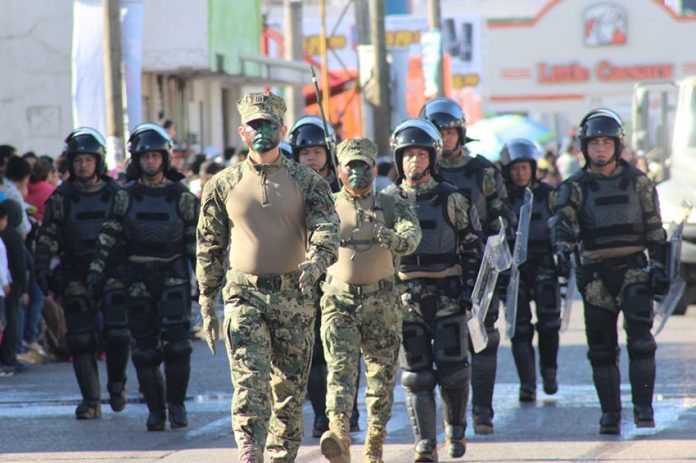Mexico will be divided into 265 regions as part of the incoming government’s security strategy, president-elect López Obrador said today.
In an interview in Ciudad Victoria, Tamaulipas, the Morena party leader said that between 300 and 600 members of the army, navy and Federal Police will be deployed to each region depending on their population and crime rate.
“We’re going to regionalize the whole country. [We’ve decided on] 265 regions so far, in each region there will be a [federal security] contingent. This [idea] arises from my experience when I was [Mexico City] mayor,” López Obrador said.
He explained that when he was in office in the capital between 2000 and 2005, 70 security contingents under a single command were deployed to different parts of Mexico City to combat insecurity and violence.
“. . . The same strategy that worked for us when I was mayor, we’re going to implement at a national level,” the president-elect said.
López Obrador said that in parts of the country with low crime rates, such as Yucatán, there would be 300 security force members for each “coordination” whereas in regions where there are high levels of homicides, kidnappings and other crime, the number would be 600.
“Here in Tamaulipas, I can tell you that in Reynosa, there will be 600,” he said, adding that he believed that more than half of the regions would require the maximum deployment.
For regions with crime rates that are neither low or alarmingly high, 450 security elements will be deployed, the president-elect said.
“We are going to seek the participation of governors and local authorities but first we’re defining the role of the federal government,” López Obrador said, adding that the new strategy would be implemented from the start of his administration.
He explained that 70% of the new government’s strategy to bring peace to the country will be “preventative,” meaning that it will involve combating the root causes of violence through stimulating economic growth, creating jobs, providing greater education opportunities and generating well-being.
The remaining 30% of the strategy will be “coercive,” the president-elect said, referring to the planned deployment of federal security forces.
López Obrador pledged that under his rule coordination between the different forces will improve and that corruption will be stamped out.
He also renewed his promise to improve salaries and conditions for police, adding that the new federal government will collaborate with state authorities to conduct a “cleansing” of corrupt officers from municipal forces.
“Let’s not forget that states are free and sovereign. There are things that can’t be done from the federal executive, they have to be agreed to,” López Obrador said.
Following the president-elect’s remarks, security analyst Alejandro Hope took to Twitter to both question and critique the new strategy.
“Why 265 regions? How will the territorial distribution be made?” he asked before going on to point out that with “an average deployment of 450 [security elements] per region, 119,250 elements will be required.”
Last year, Hope continued, “Sedena [the Secretariat of National Defense] had 52,807 elements dedicated to public security tasks.”
In a second post on the topic, the analyst said that under López Obrador’s plan each region will have approximately 480,000 residents and that with an average deployment of 450 federal security force members, there will be fewer than one element per 100,000 inhabitants.
“It’s not something that will change the [security] equation very much,” Hope declared.
López Obrador will inherit record-high levels of violent crime when he is sworn in as president on December 1.
There were more than 30,000 homicides last year, according to the National Statistics Institute, and this year is on track to be even more violent.
Cartel turf wars, pipeline petroleum theft, enforced disappearance and femicides are among the security problems the new president will be faced with.
Source: El Economista (sp)
